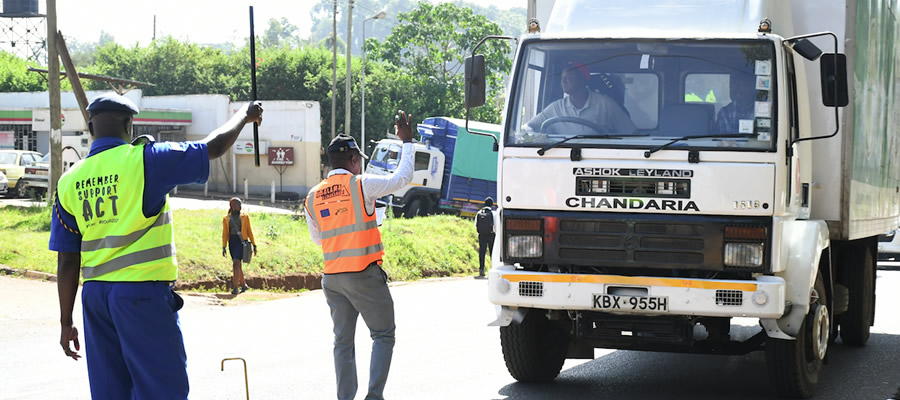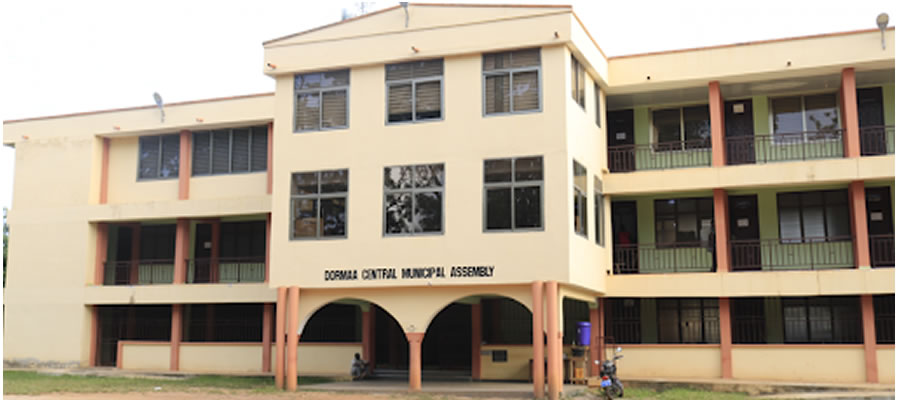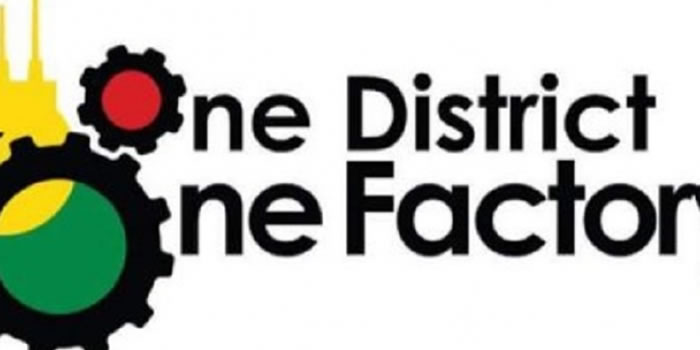

Poor health status is both a cause and consequence of poverty and hence, the development of the entire Municipality. Poor health reduces productivity; it is a drain on disposable income and reduces savings as well as stifles investment. Efforts at human resource development will therefore be grossly incomplete until efforts are made to Improve the health status of the people through improved access to quality health care.
Physical access to health institution is not a major problem in the Municipality as there are 32 health institutions made up of one Municipality Hospital, 3 Health Centres at Wamfie, Dormaa Akwamu and Nkrankwanta, 10 Rural Clinics and 4 Private Clinics. Others are 5 Private Maternity Homes, 4 Community Clinics at Wamanafo and Wamfie and 84 outreach points that are fairly evenly distributed throughout the district.
Unfortunately however, these health facilities lack adequate numbers and the eight calibre of staff to run them. For instance, apart form the Municipal Hospital, only one qualified staff mans each of the health facilities in the Municipality. To further buttress this point, the Doctor-Patient ratio and the Nurse-Patient ratio in the district now stand at 1:44,000 and 1:10,000. This situation is greatly hampering proper and effective health care delivery in the Municipal with its obvious repercussions on recuperation rate and hence productivity in the district
Morbidity Pattern In The Municipality
A cursory look at the morbidity pattern of the Municipal reveals that, Malaria tops the top 10 diseases in the Municipality accounting for 10.8% of all reported illness in the district in 2006 followed by Septicaemia 9.6%, Hypovolume shock 6%, Meningitis 4.8% and Cardiac Hilmary Arrest 4.6%.
The high prevalence rate of malaria and anaemia in the Municipal suggests a rather poor state of environmental sanitation and malnutrition respectively. This is further buttressed by the fact that, (according to the base line study) 74% of the people dispose off their liquid waste in open spaces and bushes behind their houses, while another 28% use soak aways. It was also observed that most of the houses had unkempt surroundings especially at the peripheral areas of towns and villages in the Municipality.
The situation is a little better with solid waste management. For instance, the survey revealed that about 90% of the people dispose off their refuse on public dumping sites while 6% dump their refuse indiscriminately and only 4% burn their refuse.
Out-Patient Department (OPD) Attendance
At the moment, the Municipality has an Out-Patient Department (OPD) visits per capita of 1.8. Malaria continues to be the leading cause of OPD attendance and admission accounting for 52.6% in 2003, 55% in 2004 and 51.6% in 2005. This feature is not different from the situation at the national level. This implies that a greater attention should be given to sanitation management.
Meanwhile some malaria control measures have been put in place to curb the Municipality mortality rate through malaria. They include public education campaigns, treatment of cases at health facilities, administration of Intermittent Prevention Treatment (IPT) for pregnant mothers and sale of treated bed nets at subsidised prices.
HIV/AIDS Situation in the Municipality
Available statistics from the Municipal Health Directorate indicates that HIV/AIDS prevalence rate in the Municipality has always remained below the 5% epidemic rate the prevalence rate for the years 2002, 2003, 2004 and 2005 stood at 4.7%, 4.8%, 4.4% and 3.8% respectively. The rate for the second quarter of 2006 stood at 3.7%. It could be sadly said that whiles the national prevalence rate fell from 3.6% in 2003 to 3.1% in 2004 and 2.6 in 2005 that of the district stood at between 3% and 4% within the same period.
The HIV/AIDS situation in the Municipality is too alarming thus calling for a systematic and sustained action to deal with the situation. It was in line with this approach that since 2003, the district has developed strategic plans (2001 - 2005) and (2006 - 2009) to reduce the rate of increase and prevalence.
Further, since 2002, 15 CBOs and 6 NGOs supported with fund by the Ghana AIDS Commission to organise various HIV/AIDS prevention programmes in 43 communities in the district. About 40 People living with HIV/AIDS (PLWHA) and 55 Orphans and Vulnerable Children (OVCs) have been provided with care and support. The care and support took the form of payment of medical bills, provision of nutrition supplements to PLWHAs and payment of school fees and provision of school kits and feeding cost to the (OVCs) Capacities of the CBOs and NGOs have also been built through various training session organised for them either within or without the Municipality.
The factors driving HIV/AIDS in the Municipality include:-
(i) Cross border trading and social activities with La Cote d’Ivoire.
(ii) High level of poverty (unemployment and underemployment.
(iii) Peer group influence
(iv) High rate of seasonal migration to Sefwi area (Western Region) to either cater for cocoa farms or practice their learned trade where the migrants leave behind their spouses and regular partners for months.
(v) Increased wake-keeping and entertainment.
Population Management (Family Planning)
A rapid natural increase in population especially among the poor, (in the rural areas and urban slums) poses a great constraint on household incomes, saving potentials and access to basic facilities and services. It is therefore expedient to stringently control the rate of population growth in order to keep it within the carrying capacity of the district’s resources. This will also ensure development of human resources to promote development rather than having a large population (size), which do not enhance the development of the Municipality.
In the Dormaa Central Municipal, there have been intensive population control measures district-wide, focusing on reproductive health and birth control through the use of contraceptives. This is done by officials of Family Planning Services, in conjunction with Midwives from the other health institutions in the Municipality. So far, these efforts seem to be yielding positive results as the district population is currently growing at a decreasing rate with the current growth rate standing at 2.1 percent per annum.
Family Planning services are provided in some of the health facilities in the district to assist couples in their reproductive stages. These services are provided to prevent unplanned pregnancies, space births, treat infertility and enhance reproductive health. Some of the family methods and/or services available in the Municipal health facilities include condom use, oral pills, injectables, IUD and Norplant as well as natural methods. It is estimated that 3,562 persons representing 23% of the district adult population have registered for the family planning services.
National Health Insurance Scheme (NHIS) Like all other Municipal– Ghana, the Dormaa Central Municipal has established a Municipal Health Insurance Scheme in an attempt to provide an opportunity to all registered persons to unhindered, cash-free and efficient health services. Since the inception of the scheme in the district in 2004, 24,000 (16% of the district population) people have been duly registered and issued with identification cards which qualify them to access health services. Between 2004 and 2005, the District Scheme Office paid claims totalling ¢1,329,095,676 to 19 Health Institutions which the office has signed Memoranda of Understanding (MoU) with.
Effective membership drive is constrained by widespread poverty, apathy and uncertainty about the benefits to be derived from joining the scheme.The effective operationalisation of the scheme in the district is also severely constrained by inadequate transportation facilities such as motor bikes, vehicles, adequate office space and equipment mass communication and inadequate staff, Health
Sector Collaborators
A close collaboration exist between the Municipal Health Management Team (DHMT) and the District Assembly. An enormous portion of the Municipal Assembly’s share of DACF is channelled into health
related project such as provision of potable water (boreholes), support for National Immunisation Day and Malaria Control programmes.
Challenges in Health Delivery Services
The delivery of health services in the Municipal is saddle with a number of challenges ranging from inadequate professional staff, inadequate transport facilities, inadequate residential accommodation and inadequate financial resources.
The Municipal has only four doctors and nurses to serve a population of 150,229. There is also very little opportunity for upgrading skills of staff. The DHMT has only two pick-up vehicles and three for their operations. At the moment, the District Director of Health Services has not permanent residential accommodations. Staff accommodation is also insufficient and in most cases the available premises have deteriorated functionally.
Date Created : 11/16/2017 1:47:50 AM












 facebook
facebook
 twitter
twitter
 Youtube
Youtube
 +233 593 831 280
+233 593 831 280 0800 430 430
0800 430 430 GPS: GE-231-4383
GPS: GE-231-4383 info@ghanadistricts.com
info@ghanadistricts.com Box GP1044, Accra, Ghana
Box GP1044, Accra, Ghana